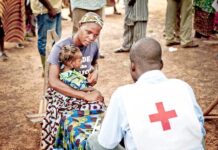A recent study by Anekpo, et al., (2024) titled “Application of Genomic Studies in Epidemiological Surveillance: A Mini-overview” published in the Journal of Biological Research & Biotechnology examines that the integration of genomics with epidemiological data can enhance disease control efforts and inform public health practices through targeted interventions.
“
Genomic surveillance enhances infectious disease control by early detection, understanding pathogen evolution, monitoring antimicrobial resistance, and guiding precision public health interventions. -Anekpo, et al., (2024)
Genomic technologies have ushered in a new era in public health, with whole-genome sequencing (WGS) at the forefront of efforts to track, understand, and manage infectious diseases. This transformative approach, known as genomic surveillance, uses genetic data to gain insights into pathogens’ origins, transmission patterns, and resistance mechanisms. As the world faces evolving health threats, including pandemics, this method has become indispensable in disease surveillance and control. The study discusses how genomic sequencing, particularly whole-genome sequencing (WGS), is used to track pathogens and manage outbreaks, highlighting its transformative impact on public health surveillance. The article emphasizes the struggles faced by low- and middle-income countries (LMICs), especially in Africa, in accurately diagnosing and reporting infectious diseases, despite advances in genomics. The authors underscore the critical role of epidemiological surveillance in disease tracking and monitoring, enabling timely preventive and control measures. In addition, the review acknowledges the barriers to integrating genomics into surveillance systems, such as funding, coordination, and data analysis challenges, and provides recommendations for improvement.
How the Study was Conducted
The authors posit that the process begins with the extraction of DNA, which is then fragmented into smaller segments. Adapters are added to the DNA fragments to facilitate attachment to the sequencing platform and provide sequencing information. Polymerase chain reaction (PCR) is used to amplify the DNA fragments, increasing the amount available for sequencing. Various technologies, including Sanger sequencing, Illumina sequencing, and newer methods like PacBio and Oxford Nanopore sequencing, are employed to read the DNA fragments and determine the nucleotide order.
What the Authors Found
The authors found that despite advancements, integrating genomics into surveillance systems faces significant barriers, including funding, coordination, and data integration issues. In addition, the authors found that the integration of genomics with epidemiological data can enhance disease control efforts and inform public health practices through targeted interventions.
Why is this Important
Early Detection and Monitoring: Genomic surveillance allows for the early detection of infectious diseases, including emerging pathogens. By analyzing the genetic material of pathogens, researchers can identify novel variants and track their spread. This information is essential for timely intervention and containment.
Understanding Pathogen Evolution: WGS provides detailed insights into the evolution of pathogens. By comparing genomic sequences, scientists can trace the lineage of a pathogen, understand its mutational patterns, and predict its behavior. This knowledge informs vaccine development, treatment strategies, and public health policies.
Antimicrobial Resistance (AMR): Genomic surveillance helps monitor AMR, which is a growing global concern. By analyzing the genetic basis of resistance, researchers can identify mechanisms and patterns of resistance. This information guides antibiotic stewardship and helps prevent the spread of drug-resistant strains.
Outbreak Investigation: During outbreaks, rapid identification of the causative agent is critical. WGS allows for precise identification of pathogens, distinguishing between closely related strains. It also helps establish transmission routes, identify sources, and assess the impact of interventions.
Precision Public Health: Integrating genomics with epidemiological data enables precision public health. By tailoring interventions based on genomic information, health authorities can target specific populations, implement effective control measures, and reduce disease burden.
Global Collaboration: Genomic surveillance relies on international collaboration. Sharing genomic data across borders enhances our understanding of global disease dynamics. It facilitates coordinated responses to outbreaks and ensures preparedness for future health threats.
What the Authors Recommend
- The authors recommend increasing awareness among healthcare professionals, researchers, and policymakers about the benefits of genomic surveillance. Training programs can help build capacity and ensure effective implementation.
- Streamlining reporting mechanisms for genomic data is crucial. The authors suggest creating user-friendly platforms and standardized formats for sharing genomic information. This simplification encourages broader participation and data exchange.
- Providing timely feedback to stakeholders involved in genomic surveillance is essential. Researchers, public health agencies, and clinicians should receive updates on findings, variant detection, and actionable insights promptly.
- The authors emphasize collaboration across institutions, countries, and regions. Sharing genomic data globally enhances our understanding of pathogen dynamics and facilitates coordinated responses during outbreaks.
- The authors advocate that adequate funding and resources are necessary for successful genomic surveillance. Investment in sequencing technologies, bioinformatics tools, and personnel training ensures sustained efforts in disease monitoring.
- The authors emphasize that Genomic surveillance should complement existing surveillance systems. Integrating genomic data with epidemiological information enhances the accuracy of outbreak investigations and informs public health decisions.
In summary, genomic surveillance, particularly through whole-genome sequencing (WGS), has revolutionized the landscape of infectious disease tracking and public health response. Its ability to detect pathogens early, understand their evolution, monitor antimicrobial resistance, and guide precision public health interventions has proven invaluable. However, realizing the full potential of this technology requires addressing significant challenges, especially in low- and middle-income countries. Through increased funding, streamlined data sharing, international collaboration, and integration with existing surveillance systems, genomic surveillance can offer transformative insights for global health security. As we move forward, it’s crucial to build capacity, promote global cooperation, and ensure that this cutting-edge technology contributes to a safer and healthier world for all.
















 The African Research (AR) Index is a comprehensive scholarly directory and database focused explicitly on journal publishers that publish and disseminate African research.
The African Research (AR) Index is a comprehensive scholarly directory and database focused explicitly on journal publishers that publish and disseminate African research.

